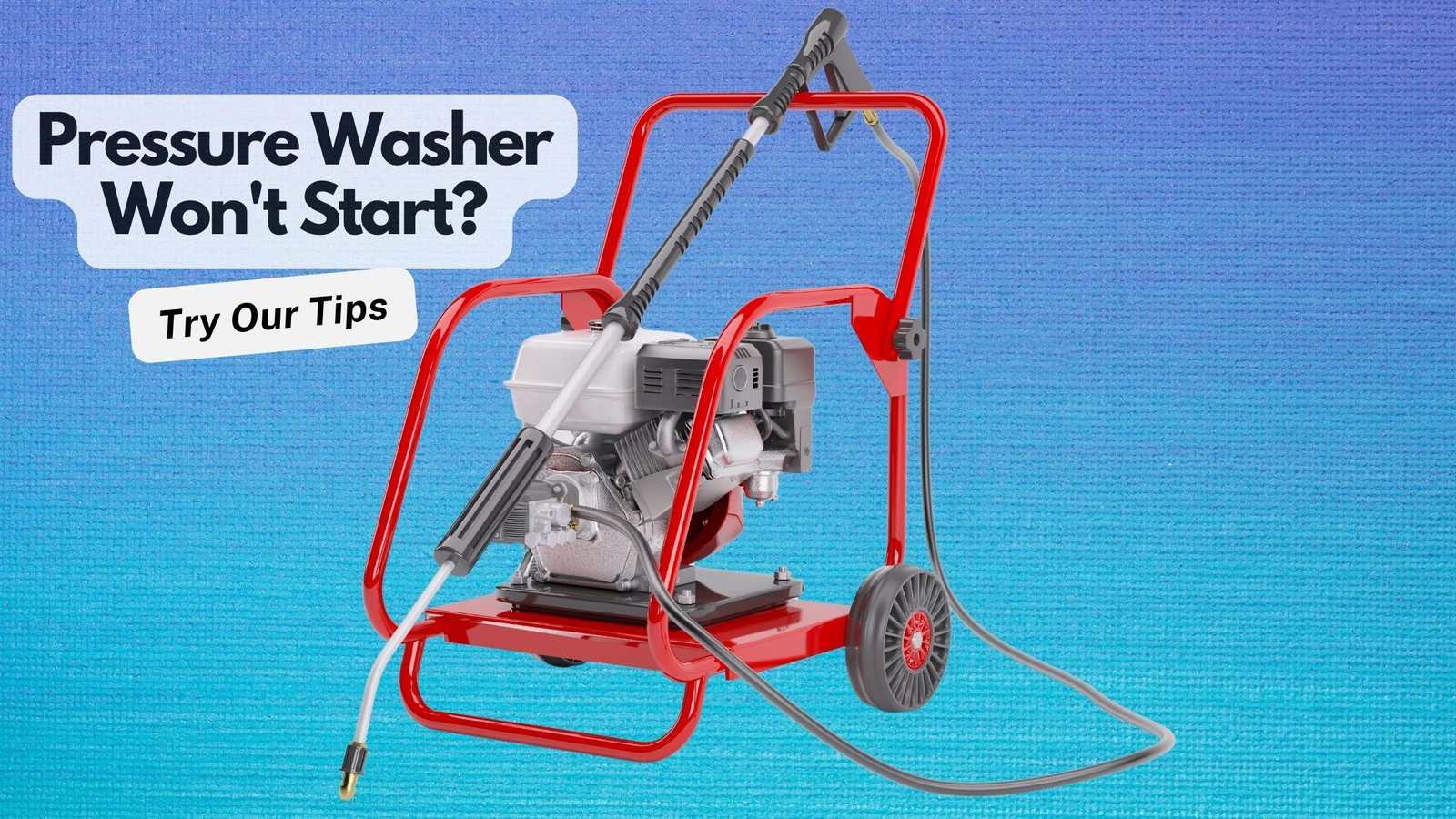
When your pressure washer won’t start, start by checking the power supply and spark plug. Confirm the power switch is on and the oil level is adequate. Inspect the air filter and carburetor for cleanliness.
Verify fuel quality and presence in the tank, using stabilizers for stored fuel. Adjust the choke position for cold starts, gradually opening it as the engine warms. Examine the spark plug for wear or damage, replacing if necessary.
Follow a systematic approach, focusing on fuel, air, and spark components. Clean or replace parts as needed, always prioritizing safety and following manufacturer guidelines. Further investigation of these elements can help resolve most starting issues.
For professional pressure washing services in Bluffton, SC, and its surrounding areas, contact us right now.
Power and Spark Plug Check
Several key steps in troubleshooting a pressure washer involve checking the power supply and spark plug functionality.
- Start by verifying the power switch on the unit is in the ‘on’ position.
- Next, check the oil level, as low oil can trigger an electronic shutoff.
- Inspect the air filter for dust and dirt accumulation, cleaning it if necessary.
- The carburetor area should likewise be examined and cleaned if needed.
- Confirm that there is fuel in the tank and inspect the fuel line for any blockages or damage.
- For the spark plug, carefully check the wire for signs of damage or corrosion.
- Using a spark plug socket, remove the plug and inspect its tip for electrode condition.
- If the electrodes appear damaged or worn, replace the spark plug.
Regular maintenance of these components can prevent starting issues and guarantee safe operation.
Also Read:
Soft Washing Vs Pressure Washing
Pressure Wash Your Two-Story House
Fuel Quality Assessment
Fuel quality plays a vital role in the performance and reliability of pressure washers, particularly for units that have been stored for extended periods. To guarantee optimal functioning, it’s important to assess and maintain fuel quality.
For stored fuel, consider using fuel stabilizers to prevent degradation. When dealing with old fuel, mixing it with fresh, high-quality fuel in a 4:1 ratio can help improve performance. Higher octane fuel is recommended for storage purposes, as it tends to maintain its quality longer.
Always check that the fuel line is open and delivering fuel to the engine properly. When starting the pressure washer, begin with the choke closed and then open it once the engine starts running.
These steps will help secure proper fuel delivery and combustion, reducing the risk of starting issues and potential damage to the engine.
Choke Position and Carburetor
The choke position and carburetor play crucial roles in the starting and operation of pressure washer engines.
When starting a cold engine, close the choke to restrict airflow and enrich the fuel mixture. Once the engine starts, gradually open the choke to allow more air in. This process helps the engine warm up properly and prevents stalling.
The carburetor mixes fuel and air in the correct ratio for combustion. If the carburetor is dirty or clogged, it can cause starting problems or poor engine performance. Regularly clean the carburetor area to remove debris and guarantee proper fuel flow.
If you suspect carburetor issues, consult the user manual for specific cleaning instructions or seek professional help. Always prioritize safety when working with engines and follow manufacturer guidelines.
Proper maintenance of the choke and carburetor can greatly improve your pressure washer’s starting reliability and overall performance.
Spark Plug Inspection
Inspecting your pressure washer’s spark plug is a critical step in troubleshooting engine start issues and maintaining peak performance.
Begin by safely disconnecting the spark plug wire. Use a spark plug socket to carefully remove the plug from the engine.
Examine the spark plug tip for signs of wear, deposits, or damage to the electrodes. A healthy spark plug should have a light brown or gray color on the electrode. If you notice excessive buildup, corrosion, or damaged electrodes, it’s time to replace the spark plug.
When installing a new plug, make certain it’s properly gapped and tightened to the manufacturer’s specifications. Regularly replacing spark plugs every few years can prevent starting problems and improve engine efficiency.
Always handle spark plugs with care and follow safety guidelines to avoid injury. Proper spark plug maintenance is crucial for reliable pressure washer operation.
Systematic Troubleshooting Approach
Effective pressure washer troubleshooting requires a methodical approach to identify and resolve issues efficiently.
Begin by focusing on the three crucial components: fuel, air, and spark.
- First, verify the fuel tank has an adequate supply of fresh fuel and that the fuel line is clear.
- Next, inspect the air filter for cleanliness and proper installation.
- Then, check the spark plug for signs of wear or damage.
If these basic checks don’t resolve the issue, move on to more complex components.
Inspect the carburetor for clogs or debris, and confirm that the choke is functioning correctly.
Always prioritize safety by disconnecting the spark plug wire before performing any maintenance.
Follow the manufacturer’s guidelines for proper handling and maintenance procedures.
